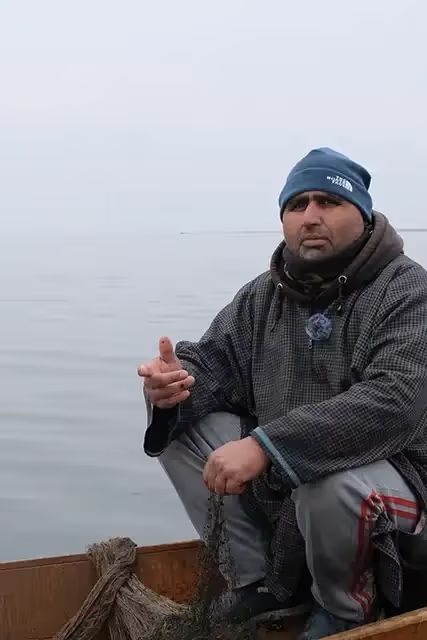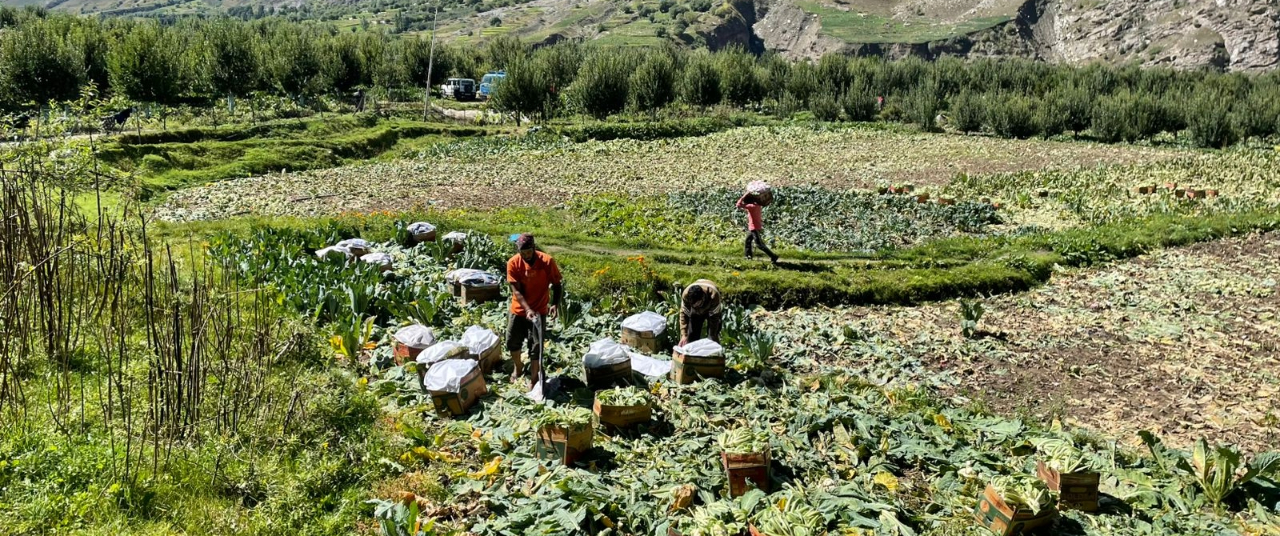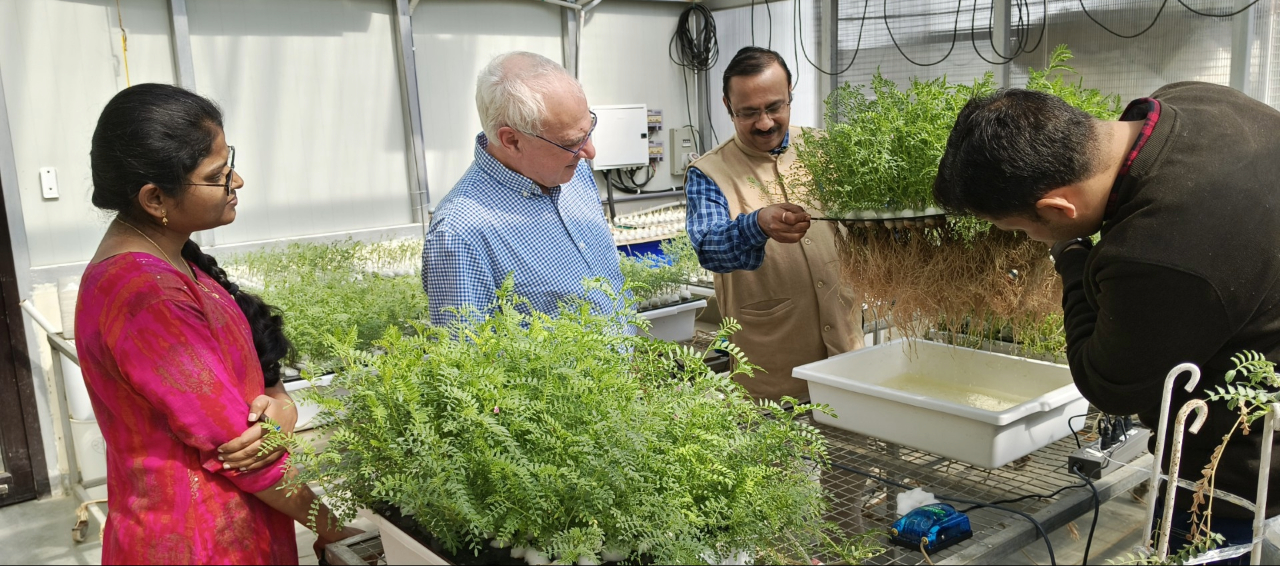Fishermen’s empty nets point to habitat destruction and ecological imbalance






Ghulam Hassan is a fisherman in the Kashmir Valley. For generations, he and his community have depended on the waters of Kashmir for their sustenance; to them, fish like the trout signify both a nourishing meal, as well as a source of income. He recalls that in the past, he could catch about 4–5 kilos of the once-commonly found fish per day. Today, however, he often rows out of the Wular lake with empty nets.
In Kashmir, an indigenous variety of trout—the snow trout—has always existed. During the British Raj, Maharaja Pratap Singh was convinced by an angler and a carpet factory owner, Frank J. Mitchel–who saw great angling potential in the Kashmiri waters–to import a batch of new trout varieties. And so, in 1899, the Duke of Bedford sent a consignment of 10,000 trout eggs to Kashmir. The consignment, however, perished on the way, and finally in 1900, a second shipment arrived from Scotland. Of these, a thousand eggs were released in the Dachigam area, while the remaining 800 were reared by Mitchel at his private facility in Baghi Dilawar Khan. Once these fry developed into fingerlings, they were introduced into various streams across the Valley.

Both rainbow and brown trout adapted successfully to the region’s waters, complementing the native snow trout populations. Recognising the potential of trout fisheries, Maharaja Pratap Singh established the first Fisheries Department in Jammu and Kashmir in 1903, appointing Mitchel as its inaugural director. Since then, trout have flourished in Kashmir’s aquatic ecosystems.
Kashmir’s trout is less spongy, more tender, and has fewer scales, making it a highly-prized fish–especially the rainbow trout, which is considered a delicacy in the region. Although not originally from Kashmir, the species thrives in this region: the area’s suitability for trout breeding stems from its cold, clear, and oxygen-rich waters, maintained at optimal temperatures between 5°C to 18°C, ideal for trout survival. The region’s pristine, glacial-fed rivers like the Lidder, Sindh, and Kishanganga provide a clean and unpolluted environment, essential for healthy fish growth.
But now, Hassan admits, “I have not seen the snow trout in two months because they are not growing as they used to. Even the common carp, which was once present in abundance, is now declining. We used to catch 4–5 kgs, even 10 kgs. But now, we get barely half-a-kilo, which has made it difficult for us fishermen.”
Also read: The rise and fall of India's Tilapia dream
Habitat destruction
So why is the fish declining? The answer lies in the rapid intervention of technology. The habitats of the trout—the streams of the regions—also happen to be a rich resource for sand mining. The high demand of this sand has led to the use of heavy machinery like JCB backhoe loaders, causing a disbalance in the delicate ecosystem. For instance, in May of 2024, more than 2500 trout died at Donkulibagh–an area in the Budgam district–because of a blockage in water supply in the process of mining of stones from a stream.

Activist Ghulam Rasool explains, “In earlier times, fishermen would catch fish in one season and extract sand in the off-season. The fisherman community, who used to do this work traditionally, understood the fish habitat, and knew where the eggs were laid. They wouldn’t disturb the habitat. Their unwritten traditional code ensured that sand was extracted sustainably, without harming the fish habitat. They understood that disturbing fish habitats would reduce their catch in the fishing season. But with mechanised sand mining, everything has changed, destroying fish habitats and disturbing the river’s natural ecological balance.”
Also read: Mumbai coastal road project leaves fishermen adrift
An uncertain future
Kashmir houses an extremely delicate ecosystem, understood best by the communities that have inhabited the area for ages. Knowledge has trickled down, generation by generation, yet the future remains uncertain. Hassan says, “Our children are unwilling to take up this work because there is nothing left to catch. I have been fishing for 20 years, but even after throwing multiple nets, no one has caught a single fish [in the recent past]. Even after the freezing temperatures, we are here [fishing], because we have families to feed.”

Many other issues threaten the survival of this species. Illegal means to catch the fish, such as mixing bleach powder in the streams, the blatant use of pesticides and insecticides in neighbouring orchards, the construction of hydroelectric projects and dams, even rampant deforestation, all hurt the ecological and economic importance of trout.
A case for long-term planning
So, what is the solution? In 2015, an idea was proposed by the then J&K Minister for Animal Husbandry, Fisheries and Science and Technology, Sajad Gani Lone: install CCTV cameras on farms and broadcast a live feed on the internet, to make it easy for the government to monitor and crack down on poaching. This approach, however, ignores the larger problem of climate change and technological interventions. CCTV cameras can do little to stop JCBs: they aren’t illegal, only unethical.
Dr. Farooz Ahmed, Dean of the Fisheries Department at Sher-i-Kashmir Institute of Agriculture Sciences (SKUAST), further explains, “Snow trout cannot be cultured like other fish. Instead, we have developed a breeding programme to produce seeds in controlled conditions, which we have been doing for the last five to six years. We produce seeds and small fingerlings, which are then released into lakes and rivers to replenish fish populations. For instance, if we release 1,00,000 fish into the water and 10,000 of them survive, the programme is considered successful. Through this fish ranching programme, we aim to conserve their genetic diversity.”
{{marquee}}
But such programmes, Dr. Ahmed warns, are just a temporary fix to a much larger problem. He says, “If the pollution levels keep increasing, water quality changes, and food remains scarce, this fish will die too.” During the British and Dogra rule, there were strict regulations in place to ensure the protection of trout fish, which is why they could thrive in the region. The solution is in long-term collaboration. Rasool says, “Fishermen with traditional knowledge and scientific experts must work together to develop strategies that protect fish populations and river ecosystems, and people’s livelihoods.”
As the conditions to farm trout in Kashmir only worsen, the demand seems to be on a rise. As reported in The Hindu, the Fisheries Department accounted for 534 farmers producing 650 tonnes of trout in 2019-20. In the fiscal year 2022–23, these numbers have grown to 1,143 farmers producing 1,990 tonnes of trout, marking a 200% growth. So, skyrocketing demand paired with an ecosystem unequipped to sustain it begs the question: Will the trout and those dependent on it survive this tide or will they only be left victims?
{{quiz}}
Explore other topics
References

Which of the following threaten the survival of the Kashmiri trout?



























.webp)

.avif)


.png)

